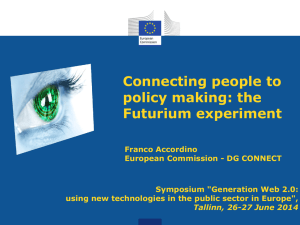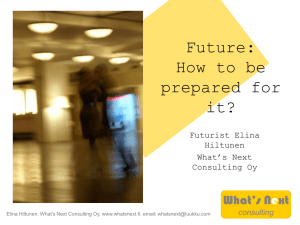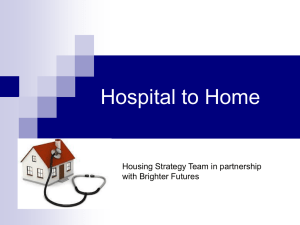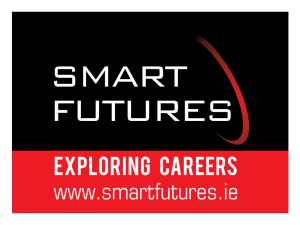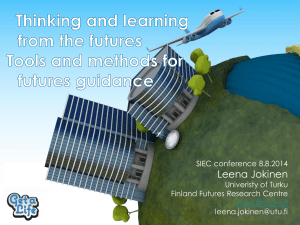12sc_caldwell_tech
advertisement
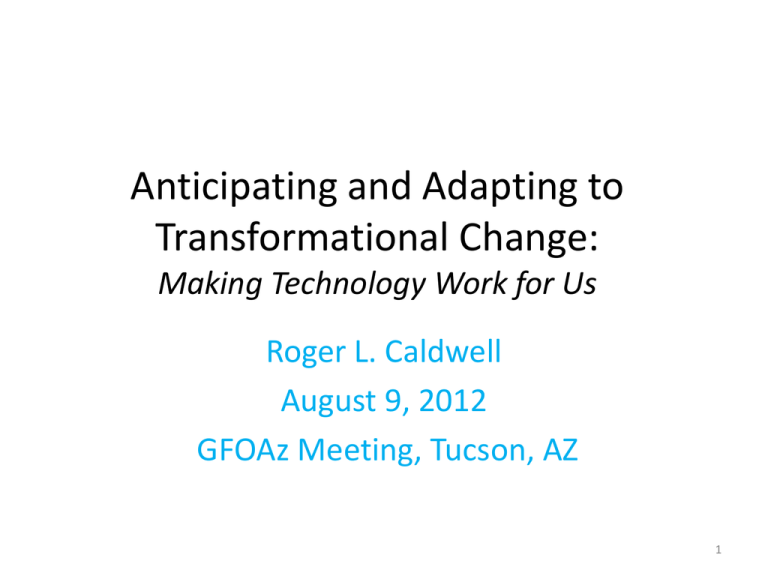
Anticipating and Adapting to Transformational Change: Making Technology Work for Us Roger L. Caldwell August 9, 2012 GFOAz Meeting, Tucson, AZ 1 Many interactions, changing independently and together Technology + Human Skills Public + Private Change + Adapt Management + Transparency 2 Change and Odiorne (1981) • Recognize and avoid groupthink • When experts disagree, do not plunge • When all evidence points in one direction, do not assume the opposite • Use feedback of facts as new situations emerge 3 Dealing with Change (from 35 Change Codes 1995) • Expect change and the unexpected • Expect a bumpy ride but for change to evolve • Don’t rely too much on forecasts • Don’t penalize mistakes • Walk a mile in their shoes 4 Four Parts 1. 2. 3. 4. Learning More About the Future Focusing on Technology Adapting to Change What Should We Do? (new slides since your packed was distributed are indicated with * and order is changed) (additional slides posted on my website) 5 Part 1 Learning More About the Future 6 The Need for a New Mindset: Understanding Transitions Between Eras • The Problem is that we live in a VUCA world: – Volatile, Uncertain, Complex, and Ambiguous • The historic solutions include: – 1) Appoint a committee, 2) watch others and try modifications of past successful efforts, 3) reorganize, and 4) provide three envelopes to the unit leader • A better solution is to be FAIR – Flexible, Agile, Innovative, and Responsive 7 Institute for the Future (2012) 8 Why Anticipate the Future? • To make better decisions today • Because you will spend the rest of your life there • Growing awareness that significant changes will happen – and adaptation is necessary 9 How to Anticipate the Future • Know something about the past (~ 30 + years) • Understand role of key driving forces of change and their implications; change is getting faster • Develop relevant scenarios for understanding possible futures (planned or unplanned) • Make realistic assumptions but don’t be too cautious and end up moving too slowly 10 Thinking Back • 1950s – post World War II, TV, DNA, relax • 1960s – the pill, man on moon, a little wild • 1970s – OSHA, EPA, NEPA, 2 oil embargos • 1980s – Personal computers, Sony walkman • 1990s – web, first mammal cloned, GPS for all • 2000s – NY 9/11/01, human genome sequenced, GM bankruptcy, social media • 2010s – Tablet computer, polarization, deficit, ??? 11 Energy Assumptions Change: GDP Relationship to Energy Use 12 7 Driving Forces of Change: The Larger Context for Adaptation 1. Economic and Financial 2. Physical and Social Infrastructure 3. Population, Demographics, and Culture 4. Resources and Environment 5. Science and Technology 6. Learning and Communication 7. Global Shifts – size, players, politics, economy 13 Transformation: Primary Themes • Structural changes in the economy • Information technology/communication • Dealing with diversity in culture/political views/income/interpretation of facts • Shifts in age distribution/baby boomers • People power vs those in leadership positions • We are not alone: global economies, diasporas (including ethnic, activist, geographic, virtual) 14 A New Vocabulary • Smart (everything) • New Normal or new rules • Strategic Foresight/Strategic Thinking • Sustainable (infrastructure, organization, population, development, environment) • Disruptive Innovation (or creative destruction) • Amplified individuals/organizations • Learning: Ted Lectures and Kahn Academy 15 Part 2 Focusing on Technology 16 17 Technology – Arrival Times Follow an Incubation Period – What is Next? • • • • • Printing Press (~ 1440) Minicomputer (1960s) Internet (1968), Web (1991) Personal Computer (Apple 1977, IBM 1981) GPS - Military/Civilian (1973/1994) • • • • • Visa Card – network (1976)* Spreadsheet (1979) Smart Phone (1994/2001)* Wikipedia (2001) Social Media (Facebook 2004, YouTube 2005) * In 2011 smart phones were used for credit card transactions (2011) 18 Smart Government • Gartner on Smart Government (gartner.com) – Objective: Enhance jurisdiction’s sustainability – Action: Involve many aspects, focus on both planning horizon and immediate – Challenges: • Optimize multiple competing outcomes • Deliver higher quality, at lower cost, with better agility and speed and all at the same time • IBM on Smarter Planet - ibm.com/smarterplanet – – – More instrumented, interconnected, and intelligent Analytics optimize resource use /inform decisions/give insights Manage risk, security, and compliance 19 How Would You Answer This Question Today? - in 2000? in 1990? in 1980? What if… • Any person in the world could contact any other person, anywhere, anytime, and cheaply and • Any person could find and read essentially any information on any topic, anytime, cheaply then How does this change the way your office operates? 20 Words of Wisdom • A man who wants to lead the orchestra must turn his back on the crowd. -- Max Lucado • Study the past, if you would divine the future. -- Confucius • The future influences the present just as much as the past. -- Friedrich Nietzsche • Change is the law of life. And those who look only to the past or present are certain to miss the future. -- John F. Kennedy • You can lead a man to Congress, but you can't make him think. -- Milton Berle 21 Part 3 Adapting to Change 22 Check Your Assumptions • Will the future be a continuation of the past or something quite different? – Different in many areas, and accompanied by turmoil • Will you have to adapt to the change? – Yes, but basically the scale and speed is the really new • Can you start early and get ahead of the competition? – It depends. Yes on some things, but new solutions will come along, and old ones may drop out. That’s life. 23 Smart Everything • National Institute of Smart Government – Re-inventing government – Key = communication/information technologies – From – to • • • • Department to customer Process to service Output assessment to outcome assessment Department view to integrated view – Where is it? 24 Change is Rapid and in Many Areas What if… A time comes when several significant changes occur at the same time. For example, 1. Significant increase in public-private partnerships for providing government services 2. Improved analytics, robotics, and communication reduce administrative personnel by 50% 3. Demographic characteristics shift – age, experience, values and culture. First baby boomers turned 65 in 2011 4. Public interacts via smart phone now – what is next? 5. Does the rapid movement to cloud information storage over estimate the safety of the cloud? 25 Cautions • Watch for group think or over reliance on traditions • Don’t confuse ordinary change with transformational change. We are in a tranformational change period. • It takes a village to make lasting change (adaptation) • Simple is good – don’t over analyze, over extrapolate, over complicate, or over worry. 26 Changing and Adapting* • Don’t move too rapidly – it may be a false alarm • Don’t move too slowly – you may miss opportunities • How do you tell the right time? – Your mindset is ready for adaptation – You practice foresight for general change – You watch others that know how to adapt 27 Best Practices for Dealing Change) 1. Keep informed by radar not a vacuum cleaner: read widely for ideas and examples, seek new viewpoints, watch behavior - not plans or organization charts 2. Recognize that ideas and solutions often recycle, but expect to change the rules to fit the times 3. Assume change and a bumpy ride; act accordingly 4. Ask the right questions and collaborate with others 5. Think strategically but act operationally, experiment on a small scale, learn from failure 28 Think Strategically 29 Four Scenarios Degree of Change Example Results of Different Approaches to the Future Continuous Change Transformation Participatory decision making Expand traditional funding Followers rather than leaders Mix of good and bad results Near term transition (big) Multiple approaches used New funding sources Communication inceased Living in Past Glory Rearranging the Chairs Fragmented decision making Strong on tradition Incremental change Values represent 1950s Short term change routine High personnel turnover Obsessed with metrics, goals, evaluations, reports Difficulty of Making Change 30 Quote by Alvin Toffler The illiterate of the 21st century will not be those who cannot read and write, but those who cannot learn, unlearn, and relearn. 31 Part 4 What Should We Do? 32 Questions • How will the organizational C-suite change? – New positions - CAO – Chief Analytics Officer – CCO (middle C = change or customer or compliance) – C-suite = Simplified equivalent of matrix management • What will we measure? How will we do it? • What automation might be emphasized? -- Many Sensors – looking for exceptions, providing alerts or control, generating questions to be answered -- Will your office look like a nuclear reactor control room? Or a smart phone? Or, ??? 33 Things to Ponder • What will happen at on 1/1/13 – whether Congress acts or not? Experiment with building scenarios with this near-term situation • How do we begin adapting to a transformation era from a short-term funding/operating mode? (note: focus on barriers to change) • How can we change our daily routine even a little to practice anticipating the future? 34 Conclusions: The Need for a New Mindset: Understanding Transitions Between Eras • The Problem is that we live in a VUCA world: – Volatile, Uncertain, Complex, and Ambiguous • The historic solutions include: – Appoint a committee, watch others, try modifications of past successful efforts, reorganize, give the unit leader 3 envelopes • Two choices for a better solution: – Be FAIR (my solution), Flexible, Agile, Innovative, and Responsive – Or, also define VUCA as solution (Source: IFTF) • Vision, Understanding, Clarity, and Agility Questions and Follow-up Reading Speaker’s web page and course links • Short course on anticipating the future: cals.arizona.edu/futures • References on change and this presentation: cals.arizona.edu/~caldwell If you have questions after the meeting, send me an email -roger.caldwell@cox.net More slides are in the Handout Including links to references and additional approaches, futures organizations. 36 Additional Items for File Version Items after this slide were not presented but are included for those reading the slides via internet posting in meeting materials. Internet addresses are linked for easy access to details. 37 Some Thoughts from Gartner* • Tablets and mobile devoces to manage the enterprise • Next PC era – cloud (personal and enterprise) • Analytics focus on users and collaboration • Pervasive role of “internet things” • Contextual and Social Experiences – Users empowered – Change business plan 38 Example Approaches to the Future • Transparency – Data are complex and changing – with new methods of sharing and analyzing – Media accuracy varies and media types vary – Keep transparent to minimize problems of above • Transformation – In many areas (subjects, countries, organizations) – Many transformations in the past – we know something about the processes • Information Flow/Actions (all types) – Between governments, individuals, private sector – Governing by the network (book by Goldsmith and Eggers) 39 Key Issue to Think About (again) Doing More with Less • Communication The message is key: detail level and method (alert, executive report, white paper), relevant, accurate, timely • Infrastructure Cooperation, partnerships, electronic/physical • Operations Mandates and accountability factors Clear and concise policies Risk and reward – relevant to a new environment Asking the right question Efficient and Effective (not efficient at wrong thing) 40 Key Futures Organizations World Future Society (WFS) -- http://wfs.org Contains transcript of interviews with major futurists/experts. Lists articles in its magazine but you need a membership to read the text. Membership if very broad and mixed by culture, education, and interest. World Futures Studies Federation (WFSF) -- http://wfsf.org Contains lists of future programs in tertiary educational institutions, recommended books on the future (organized by language), futures journals, newsletter (Futures Bulletin). Membership is narrow and requires some expertise in futures work. More of an academic/government orientation than the other organizations. Shaping Tomorrow -- http://shapingtomorrow.com An easy to use, free (for basic use) site of discussion groups and summary studies or basic information. It is useful for general scanning or adding breadth to your analysis. Membership is a mix of both general and experienced futurists. There are no meetings, only electronic discussions. 41 Further Reading From Futures Class – http://cals.arizona.edu/futures • Futures Techniques – Approaches Learned from Experiences of Others http://cals.arizona.edu/futures/ref/booksapproach.html • Change: Using it to Your Advantage http://cals.arizona.edu/futures/era/change.html (see two references) George Odiorne, Resistance to Change (a summary of book) Joe Flower, Change Codes (35 examples with brief explanation) • Scenario Development http://cals.arizona.edu/futures/sce/scemain.html Reading about foresight and working with scenarios 42 Examples of Adapting State and Local Government - 2003 http://www.4uth.gov.ua/usa/english/politics/ijde 1003/ijde1003.htm • Using e-government: citizen services, efficiency • Modernization of state/local government • Innovations in public policy, services • Historic adaptations to social and technical change – references for further reading 43 Miscellaneous References • Combining the CFO with the CAO – an example: http://ritesite.com/resume/cfo-chief-analytics-officerchief-46991.htm • Institute for the Future (iftf.org) – Good ideas, some reports free and online • Suggested Reading on Futures Techniques – Go to cals.arizona.edu/~caldwell and scroll to the bottom – 4 recommended books described and links to 4 sets of guidelines for studying the future 44 References (continued) Combining the CFO with the CAO – an example: http://ritesite.com/resume/cfo-chief-analyticsofficer-chief-46991.htm Global Trends 2025: A Transformed World, National Intelligence Council http://www.dni.gov/nic/NIC_2025_project.html Clayton Christensen – several books related to disruptive innovation - http://claytonchristensen.com/ 45


